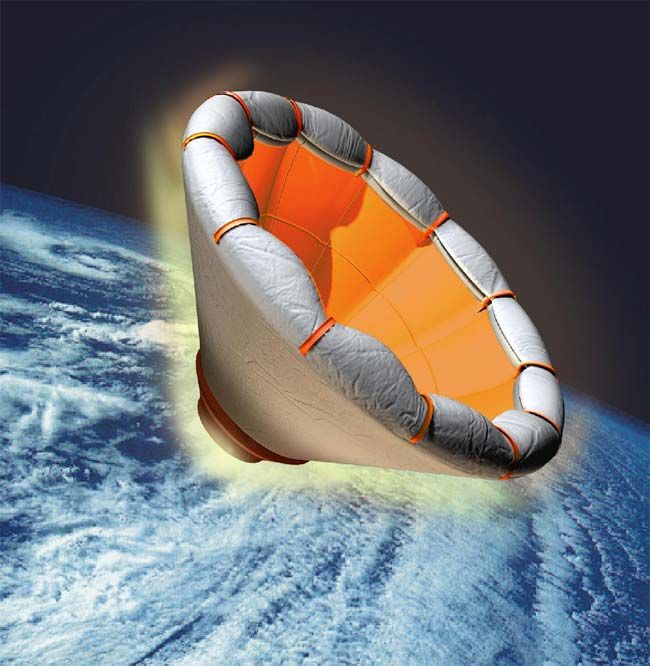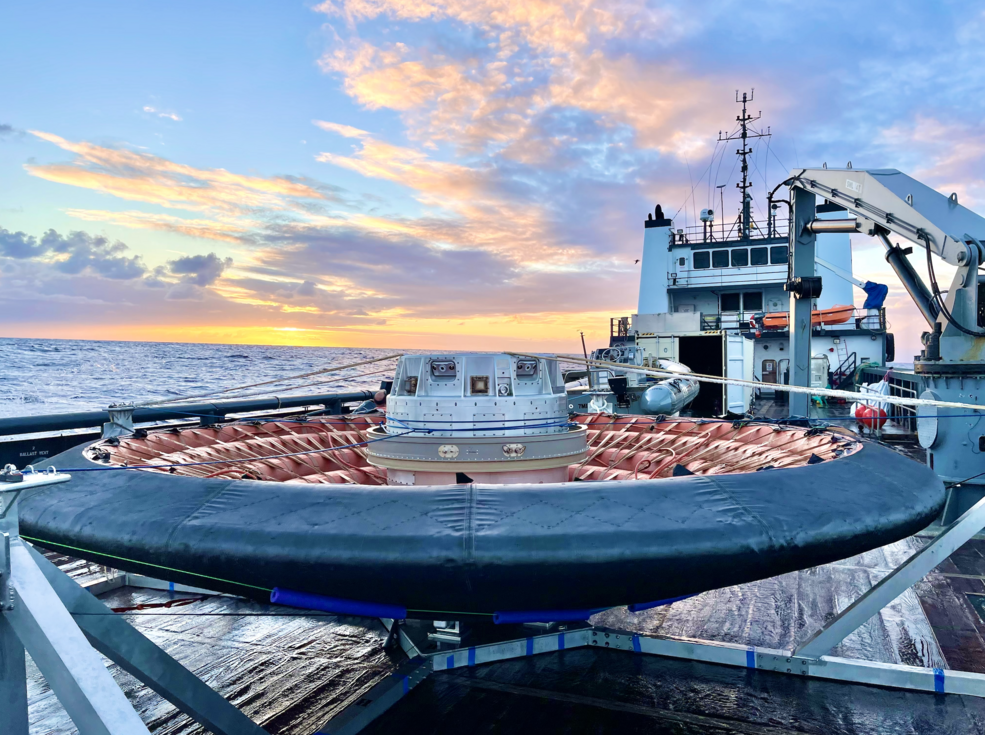dhanson865
Well-Known Member
If Spacex gets me there, is it feasible to come back by parachute?
(I know I will have to hold my breath for the first part of the descent)
You can install our site as a web app on your iOS device by utilizing the Add to Home Screen feature in Safari. Please see this thread for more details on this.
Note: This feature may not be available in some browsers.
If Spacex gets me there, is it feasible to come back by parachute?
(I know I will have to hold my breath for the first part of the descent)
That's right. I need to wash off a lot of speed while in the upper atmosphere so my feet don't get too hot on the way in.But of course that insane stunt did not start at orbital velocity.
What, you mean I can't just Mark Whatny my glove to get rid of enough speed? /sBut of course that insane stunt did not start at orbital velocity.
Here you go:But of course that insane stunt did not start at orbital velocity.


Naturally, it would be given unmanned testing first to ensure that anyone who tried it would be fine. The inflatable (LOFTID) has already been tested, though I don't know what the conditions are like in the interior. I do know that masses just over 1 ton, inflates to a diameter of 6 meters and hits 9g during reentry (no idea how long, but you'd be lying down). It handles the heat and deceleration, then floats in the ocean when you land. Then it can be use as a bouncy house at the after party in Hawaii.Being the first person to test one of those would have an extremely high pucker factor...

Naturally, it would be given unmanned testing first to ensure that anyone who tried it would be fine. The inflatable (LOFTID) has already been tested, though I don't know what the conditions are like in the interior. I do know that masses just over 1 ton, inflates to a diameter of 6 meters and hits 9g during reentry (no idea how long, but you'd be lying down). It handles the heat and deceleration, then floats in the ocean when you land. Then it can be use as a bouncy house at the after party in Hawaii.
I don't believe LOFTID has its own deorbit burn hardware, however. With some kind of thrusters, the resulting package would probably be something rather bulkier than Bruce McCandless' MMU backpack. Call it 1.5 tons per astronaut. A really heavy parachute.

It's not as ideal as landing in something like Dream Chaser, but it'll get you down with a lot less drama than Sandra Bullock in Gravity.
It would be awesome to be able to generate a plasma in one, but rather doubt the masses involved would do it...

As LOFTID reentered Earth’s atmosphere and reached nearly 2,700 degrees Fahrenheit, the extreme heat caused gases around it to ionize and form plasma.
(replying to myself)Ahh, you're thinking SpaceX didn't want to show it... I was thinking maybe the Gov't didn't for some reason ...
Certainly. SpaceX is the owner of the "commercial or financial information" that is being protected.I wonder if at the behest of SpaceX as the "owner"?
That is 5 times sea level atmospheric pressure on Earth. I’m not a rocket scientist, but is that much pressure needed to keep the propellants at the bottom of the tanks when Starship is in boost phase?One thing that annoyed me was talking about the autogenous pressurization system using 5 bar of pressure to help keep the liquids seated in the tanks.
Nothing. High pressure doesn't decide where the liquid in the tank goes because the entire tank is in equilibrium. The autogenous pressurization system exists to ensure that seated propellants are forced through the propellant lines and to the engines. The pressure outside the engines is either 1 bar or lower, so with 5 bar pushing (once the valves are open), the propellants will move.What am I missing?
Pressure is also important to impart the needed acceleration to the fluid during flow rate increases and avoid cavitation. Vacuum has a lower limit, positive pressure can be much much higher.Nothing. High pressure doesn't decide where the liquid in the tank goes because the entire tank is in equilibrium. The autogenous pressurization system exists to ensure that seated propellants are forced through the propellant lines and to the engines. The pressure outside the engines is either 1 bar or lower, so with 5 bar pushing (once the valves are open), the propellants will move.
The other thing that the high pressure provides is structural integrity for the vehicle. I have no idea which is the dominant factor.
iIt was this phrase that had me confused.5 bar of pressure to help keep the liquids seated in the tanks.
I botted this and it turns out that a 5 bar pressure differential will move liquid oxygen at about 30 m/s, which is 67 mph or 108 km/h. That's ignoring the additional velocity that would come from gravity or from the rocket accelerating. It also ignores complexities such as surface tension, turbulence, and so on.The pressure doesn't stop the slosh, but it drives whatever propellant overlies the tank exits THROUGH them to the engines. And pretty fast, apparently!
Out of curiosity, what pipe length and diameter was that based on?I botted this and it turns out that a 5 bar pressure differential will move liquid oxygen at about 30 m/s, which is 67 mph or 108 km/h. That's ignoring the additional velocity that would come from gravity or from the rocket accelerating. It also ignores complexities such as surface tension, turbulence, and so on.
To get a sense of 5 bar of pressure, two-liter soda bottles apparently sit at around 3.5 bar, and they burst at around 10 bar.


